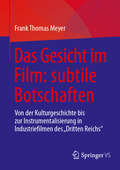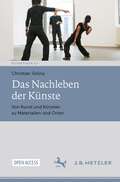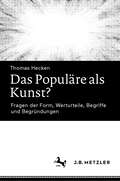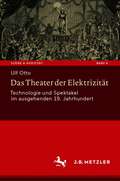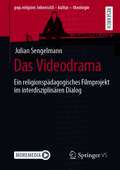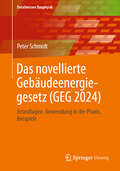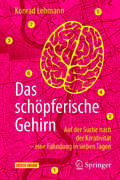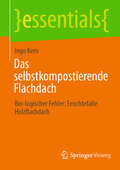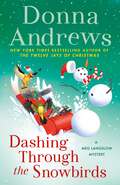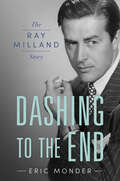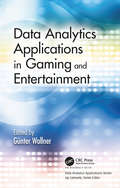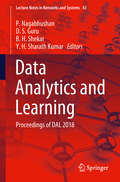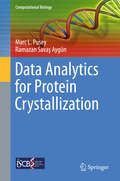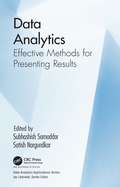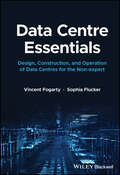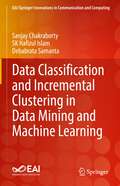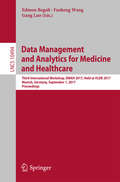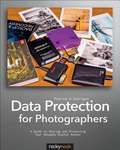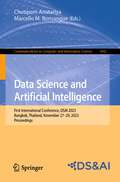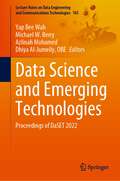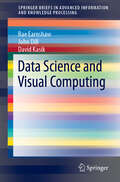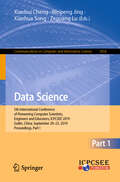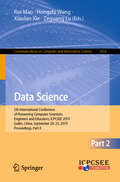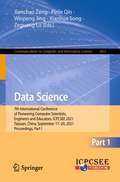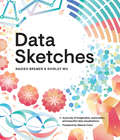- Table View
- List View
Das Gesicht im Film: Von der Kulturgeschichte bis zur Instrumentalisierung in Industriefilmen des "Dritten Reichs"
by Frank Thomas MeyerDas menschliche Gesicht gilt einerseits als subtiler, „schwacher Code“, das sich im Alltag den Deutungen der menschlichen Wahrnehmung immer wieder zu entziehen scheint. Andererseits wird gerade in Medien wie dem Film das Gesicht strategische eingesetzt, um unterschwellig Botschaften zu vermitteln. Die Bild-Werdung des Menschen hat, wie diese Arbeit zeigt, nicht erst mit dem Aufkommen von Diktaturen seine „Unschuld“ verloren. Aber erst im Modus seiner Lesbarmachung, als still gestelltes Bild wie es in Form der Großaufnahme im Film zur Geltung kommt, kann es als scheinbare Evidenz seine manipulierende Funktion einnehmen.Ob in Deutschland, Italien oder Russland – alle diese Diktaturen wollen sich zu Beginn des 20. Jahrhunderts der Arbeiterschaft versichern, um ihre ideologischen Ziele zu verwirklichen. Das kulturell und symbolisch vorgeprägte Gesicht, muss daher für die Propaganda umcodiert werden. Dem immer noch weit verbreiteten Verdikt der „Gleichschaltung“ wird jedoch in diesem Buch differenziert gegenübergetreten: Die Möglichkeiten des Gesichts, es für unterschiedlichen historischen Konstellationen und Herausforderungen anzupassen und zu instrumentalisieren, machen es zu einem facettenreichen Medium für rhetorische Strategien.
Das Nachleben der Künste: Von Kunst und Künsten zu Materialien und Orten (Ästhetiken X.0 – Zeitgenössische Konturen ästhetischen Denkens)
by Christian GrünyDie künstlerische Produktion der Gegenwart ist äußerst divers und kaum mehr auf klare Kategorien festlegbar. Es ist eine geläufige Diagnose, dass sich Disziplinengrenzen auflösen und dass letztlich alles in einer Kunst im Singular aufgeht. Das Buch vertritt die These, dass bei allen Überschreitungs- und Hybridisierungsbewegungen disziplinäre Logiken weiterhin bedeutsam sind und dass die Begriffe der Kunst im Singular und der Künste im Plural nur schlecht geeignet sind, diese Situation zu beschreiben: Sie unterschätzen die Heterogenität der künstlerischen Arbeiten bzw. suggerieren, die verschiedenen Disziplinen ließen sich sauber nebeneinander sortieren und folgten im Großen und Ganzen derselben Logik, was offensichtlich nicht der Fall ist. Als alternative Beschreibungsmöglichkeiten werden die Begriffe des Materials und des Ortes angeboten, mit denen jeweils konkrete, aber systematisch verankerte Analysen an die Stelle klarer Kategorisierungen gesetzt werden. Der Begriff des künstlerischen Materials wird von Theodor W. Adorno übernommen, aber flexibilisiert: Er ist produktiv darin, dass er die innere Historizität von Kunstwerken zu denken erlaubt und sie auf Vorläufer und Traditionslinien beziehbar macht. Er muss allerdings von der Vorstellung eines klaren Fortschritts befreit und von der Fixierung auf einzelne, getrennte Disziplinen gelöst werden. Mit dem Begriff des Ortes wird der disziplinären, architektonischen, institutionellen und geopolitischen Situierung künstlerischer Arbeiten Rechnung getragen. Die beiden Begriffe funktionieren komplementär, indem sie Materiallinien auch über Grenzen hinweg verfolgbar und die Interferenzen beschreibbar machen, die sich bei Ortswechseln ergeben.Dies ist ein Open-Access-Buch.
Das Populäre als Kunst?: Fragen der Form, Werturteile, Begriffe und Begründungen
by Thomas HeckenPopulären Werken wird seit Jahrhunderten der Status des Kunstwerks aberkannt, unter Verweis auf deren vermeintliche Oberflächlichkeit, Eindimensionalität, Effekthascherei und Standardisierung werden sie streng von ‚echter‘ Kunst geschieden. Schiller, Nietzsche, Adorno, Greenberg, unzählige Kritiker und Feuilletonisten in Westeuropa und den USA – sie alle eint ein starker Vorbehalt gegenüber dem, was von den Vielen anerkannt, geschätzt und gekauft wird. Seit Beginn des 18. Jahrhunderts und besonders seit den 1950er Jahren gibt es aber auch eine Reihe von Argumenten gegen die Auffassung, dass nichts Kunst sei, was auf große Zustimmung trifft. Die Fülle an unterschiedlichen Positionen, Aussagen und Argumentationsmöglichkeiten aufzuzeigen, zu bündeln, zu systematisieren und zu überprüfen, die dem Populären zu künstlerischer Anerkennung verhelfen wollen, ist Zweck dieses Buches. Das Resultat ist eine umfassende Darstellung von Gründen, auch populäre Werke aus Literatur, Musik, Film, Fotografie, bildender Kunst und Design als genuine Kunstwerke betrachten zu können.
Das Theater der Elektrizität: Technologie und Spektakel im ausgehenden 19. Jahrhundert (Szene & Horizont. Theaterwissenschaftliche Studien #6)
by Ulf OttoDas Theater der Moderne gründet sich auf ästhetische Energien. Seit den 1880er Jahren aber sind es elektrische Energien, aus fossilen Brennstoffen in Kraftwerken erzeugt, die im Theater zu zirkulieren beginnen. Installiert wird eine mysteriöse Entität, die noch als Lebenskraft gehandelt wird und schon für Fortschritt durch Technik steht. Mit der Elektrifizierung des Theaters wird Elektroindustrie respektabel und Bühnenkunst modernistisch. Entsorgt werden die Kulissen, die im Scheinwerferlicht nur noch verstaubt erscheinen, und aus der Bildermaschine wird Raumkunst. Doch wichtiger sind die institutionellen Transformationen, die sich in bislang unbeachteten Koalitionen, Kontinuitäten und Konkurrenzen von technischen und ästhetischen Dingen abspielen. Ingenieurswissen, Kontrolltechniken und Versorgungssysteme ändern, wie Theater und Gesellschaft verschaltet sind. Der Interaktionsraum (zwischen-)menschlicher Leiblichkeit des 20. Jahrhunderts entpuppt sich als eine technische Konstellation.
Das Videodrama: Ein religionspädagogisches Filmprojekt im interdisziplinären Dialog (pop.religion: lebensstil – kultur – theologie)
by Julian SengelmannDas religionspädagogische und praktisch-theologische Projekt VIDEODRAMA ist ein hybrider, interdisziplinärer Ansatz, bei dem mit einer Gruppe in einem kreativen Prozess ein Film produziert wird, der im „Raum eines biblischen Textes“ entsteht. Die Teilnehmenden entwickeln diese Filmerzählung in allen Facetten einer klassischen Filmproduktion bis hin zur Premiere in einem Kino. Das VIDEODRAMA ist ein interdisziplinäres Projekt, das sich dezidiert von wissenschaftlichen Konkurrenzen und Konzeptionen loslöst. Dieses Buch begleitet exemplarisch einen solchen Prozess, entwickelt eine Theorie des VIDEODRAMAS und bringt diese mit ausgewählten aktuellen religionspädagogischen Diskussionen ins Gespräch.
Das novellierte Gebäudeenergiegesetz: Grundlagen. Anwendung in der Praxis, Beispiele (Detailwissen Bauphysik)
by Peter SchmidtDieses Lehrbuch gibt sowohl Studierenden als auch Praktikern eine grundlegende Einführung in das novellierte Gebäudeenergiegesetz (GEG), umgangssprachlich auch Heizungsgesetz genannt, in der Fassung 2024. Nach einem allgemeinen Teil mit Anwendungsbereich und wichtigen Begriffsdefinitionen werden die Anforderungen an Neubauten und bestehende Gebäude, an Anlagen der Heizungs-, Kühl- und Raumlufttechnik sowie der Warmwasserversorgung behandelt. In diesem Zusammenhang werden die verschiedenen Nachweise (z. B. Referenzgebäudeverfahren, Bauteilverfahren) beschrieben und an Beispielen erläutert. Sofern erforderlich, wird hierbei auch auf die benötigten Regelwerke (z. B. Normen zum Wärmeschutz und zur energetischen Bewertung von Gebäuden) eingegangen. Außerdem werden die verschiedenen Anlagenkomponenten und ihre Funktionsweise erläutert. Den Abschluss bilden Beiträge zum Energieausweis sowie zu sonstigen Vorschriften (Vollzug desGesetzes, Übergangsvorschriften usw.). Neben vielen Beispielen mit Lösungsweg unterstützen zahlreiche Aufgaben und Fragen mit Lösungen beim Selbststudium und der Prüfungsvorbereitung.
Das schöpferische Gehirn: Auf der Suche nach der Kreativität – eine Fahndung in sieben Tagen
by Konrad LehmannDas Geheimnis des Geistesblitzes – entschlüsselt Dieses Buch ist eine Einladung zu einer aufregenden Spurensuche: Erkunden Sie Schritt für Schritt die neuronalen Grundlagen der menschlichen Kreativität. Sie werden dabei unweigerlich einige Überraschungen erleben. Die Kulturgeschichte des Menschen ist nicht zuletzt die Geschichte großer Gedanken und genialer Neuerungen – und damit die Geschichte geistsprühender Gehirne. Seit wenigen Jahren erst ergründen die Neurowissenschaften, was in solchen Gehirnen vorgeht, wenn sie neue Ideen hervorbringen und verwirklichen. Der erfahrene Hirnforscher Konrad Lehmann gewährt uns einen ebenso unterhaltsamen wie informativen Einblick in diese fesselnde Forschungsrichtung: Was ist eine kreative Persönlichkeit? Sind Genies wirklich verrückt? Woher kommt der Antrieb, kreativ zu sein? Welche Gehirngebiete sind aktiv, wenn wir rappen oder jazzen? Und welche, wenn wir eine zündende Idee haben? Warum kommen die besten Einfälle im Schlaf? Die Suche nach der Kreativität im Gehirn ist spannend wie ein Krimi. Begleiten Sie den Autor und Commissario Prefrontale auf einer doppelten Fahndung: in den Gassen einer sich verändernden Stadt und durch die dunklen Windungen des Gehirns.___"Das schöpferische Gehirn" ist die erste deutschsprachige Einführung in die neurobiologische Kreativitätsforschung, die sich an ein allgemeines Publikum richtet. Das Buch vereint wissenschaftliche Sorgfalt, kulturelle Bildung und stilistisches Feuer. Komplexe Zusammenhänge werden unterhaltsam und bildhaft vermittelt, wozu die allegorische Rahmenhandlung beiträgt.
Das selbstkompostierende Flachdach: Bio-logischer Fehler: Feuchtefalle Holzflachdach (essentials)
by Ingo KernDie energetischen Anforderungen beim Hausbau sind in den letzten Jahren gestiegen. Daher werden Holzflachdächer häufig mit immer dickeren Dämmstoffschichten ausgestattet und der komplette Hohlraum in der Sparrenebene ausgefüllt. In den letzten Jahren sind vermehrt Schäden an Holzflachdächern mit Dämmung in der Tragwerksebene aufgetreten. Dieses essential zeigt die Ursachen auf und gibt Hinweise zum Umgang mit der sensiblen Konstruktion.
Dashing Through the Snowbirds: A Meg Langslow Mystery (Meg Langslow Mysteries #32)
by Donna AndrewsDashing Through the Snowbirds is the next merry installment of Donna Andrews's New York Times bestselling Meg Langslow mystery series.Christmas in Caerphilly is wonderful! Unless you’re a Canadian whose inconsiderate boss is forcing you to spend the holiday there, far from family and friends, with only a slim chance of a white Christmas. Meg already has her hands full, trying to make the season festive for the dozen programmers who are staying with her and Michael while working on a rush project with her brother’s software company. At least it’s an interesting project, since the Canadian company is doing forensic genealogy and DNA analysis.When the inconsiderate boss is found murdered, there are too many suspects. Even before their Christmas in exile, his own employees had plenty of motives, and the growing number of people suing the company for faulty DNA analysis and invasion of their genetic privacy include at least one notorious murderer. Can Meg crack the case in time to keep the Yuletide bright?
Dashing to the End: The Ray Milland Story (Hollywood Legends Series)
by Eric MonderBorn Alfred Reginald John Truscott-Jones, Welsh American actor Ray Milland (1907–1986) appeared in more than 135 theatrical releases between 1929 and 1985 and on radio, television, and the stage, while also becoming a film director; Milland’s extensive canon across such a period is remarkable, especially considering his lack of formal training, his belated start in show business in his late twenties, and the fact he only lived to age seventy-nine. Perhaps best remembered for his Oscar-winning performance as the tortured alcoholic in Billy Wilder’s The Lost Weekend (1945) or his outstanding collaboration with Alfred Hitchcock in Dial M for Murder (1954), there is much more to Milland’s life and career than the few films that elevated him from star to icon. Despite his prolific and successful career, Dashing to the End: The Ray Milland Story is the first comprehensive biography of the star. Milland’s personal and professional trajectory epitomize quintessential Hollywood lore: the British army soldier-turned-actor who went from unknown, struggling bit player to Oscar-winning star to aging, scandal-haunted “has-been” to comeback character actor to present-day cult figure. Using interviews with Milland’s costars and colleagues, as well as research from several major archives, author Eric Monder brings into sharp relief both the positive and negative aspects of the Hollywood film and television industries and paints a well-rounded portrait of this complex man and artist.
Data Analytics Applications in Gaming and Entertainment (Data Analytics Applications)
by Günter WallnerThe last decade has witnessed the rise of big data in game development as the increasing proliferation of Internet-enabled gaming devices has made it easier than ever before to collect large amounts of player-related data. At the same time, the emergence of new business models and the diversification of the player base have exposed a broader potential audience, which attaches great importance to being able to tailor game experiences to a wide range of preferences and skill levels. This, in turn, has led to a growing interest in data mining techniques, as they offer new opportunities for deriving actionable insights to inform game design, to ensure customer satisfaction, to maximize revenues, and to drive technical innovation. By now, data mining and analytics have become vital components of game development. The amount of work being done in this area nowadays makes this an ideal time to put together a book on this subject. Data Analytics Applications in Gaming and Entertainment seeks to provide a cross section of current data analytics applications in game production. It is intended as a companion for practitioners, academic researchers, and students seeking knowledge on the latest practices in game data mining. The chapters have been chosen in such a way as to cover a wide range of topics and to provide readers with a glimpse at the variety of applications of data mining in gaming. A total of 25 authors from industry and academia have contributed 12 chapters covering topics such as player profiling, approaches for analyzing player communities and their social structures, matchmaking, churn prediction and customer lifetime value estimation, communication of analytical results, and visual approaches to game analytics. This book’s perspectives and concepts will spark heightened interest in game analytics and foment innovative ideas that will advance the exciting field of online gaming and entertainment.
Data Analytics and Learning: Proceedings of Dal 2018 (Lecture Notes in Networks and Systems #43)
by D. S. Guru P. Nagabhushan B. H. Shekar Y. H. Sharath KumarThis paper describes a method to localize and recognize seven-segment displays on digital energy meters. Color edge detection is first performed on a camera-captured image of the device which is then followed by a run-length technique to detect horizontal and vertical lines. The region of interest circumscribing the LCD panel is determined based on the attributes of intersecting horizontal and vertical lines. The extracted display region is preprocessed using the morphological black-hat operation to enhance the text strokes. Adaptive thresholding is then performed and the digits are segmented based on stroke features. Finally, the segmented digits are recognized using a support vector machine classifier trained on a set of syntactic rules defined for the seven-segment font. The proposed method can handle images exhibiting uneven illumination, the presence of shadows, poor contrast, and blur, and yields a recognition accuracy of 97% on a dataset of 175 images of digital energy meters captured using a mobile camera.
Data Analytics for Protein Crystallization
by Marc L. Pusey Ramazan Savaş AygünThis unique text/reference presents an overview of the computational aspects of protein crystallization, describing how to build robotic high-throughput and crystallization analysis systems. The coverage encompasses the complete data analysis cycle, including the set-up of screens by analyzing prior crystallization trials, the classification of crystallization trial images by effective feature extraction, the analysis of crystal growth in time series images, the segmentation of crystal regions in images, the application of focal stacking methods for crystallization images, and the visualization of trials.Topics and features: describes the fundamentals of protein crystallization, and the scoring and categorization of crystallization image trials; introduces a selection of computational methods for protein crystallization screening, and the hardware and software architecture for a basic high-throughput system; presents an overview of the image features used in protein crystallization classification, and a spatio-temporal analysis of protein crystal growth; examines focal stacking techniques to avoid blurred crystallization images, and different thresholding methods for binarization or segmentation; discusses visualization methods and software for protein crystallization analysis, and reviews alternative methods to X-ray diffraction for obtaining structural information; provides an overview of the current challenges and potential future trends in protein crystallization.This interdisciplinary work serves as an essential reference on the computational and data analytics components of protein crystallization for the structural biology community, in addition to computer scientists wishing to enter the field of protein crystallization.
Data Analytics: Effective Methods for Presenting Results (Data Analytics Applications)
by Subhashish Samaddar Satish NargundkarIf you are a manager who receives the results of any data analyst’s work to help with your decision-making, this book is for you. Anyone playing a role in the field of analytics can benefit from this book as well. In the two decades the editors of this book spent teaching and consulting in the field of analytics, they noticed a critical shortcoming in the communication abilities of many analytics professionals. Specifically, analysts have difficulty in articulating in business terms what their analyses showed and what actionable recommendations were made. When analysts made presentations, they tended to lapse into the technicalities of mathematical procedures, rather than focusing on the strategic and tactical impact and meaning of their work. As analytics has become more mainstream and widespread in organizations, this problem has grown more acute. Data Analytics: Effective Methods for Presenting Results tackles this issue. The editors have used their experience as presenters and audience members who have become lost during presentation. Over the years, they experimented with different ways of presenting analytics work to make a more compelling case to top managers. They have discovered tried and true methods for improving presentations, which they share. The book also presents insights from other analysts and managers who share their own experiences. It is truly a collection of experiences and insight from academics and professionals involved with analytics. The book is not a primer on how to draw the most beautiful charts and graphs or about how to perform any specific kind of analysis. Rather, it shares the experiences of professionals in various industries about how they present their analytics results effectively. They tell their stories on how to win over audiences. The book spans multiple functional areas within a business, and in some cases, it discusses how to adapt presentations to the needs of audiences at different levels of management.
Data Centre Essentials: Design, Construction, and Operation of Data Centres for the Non-expert
by Vincent Fogarty Sophia FluckerData Centre Essentials Understand the design, construction and operation of data centres with this easy-to-use reference Data centres are spaces where computer systems, physical network technology and associated components are housed, operated and monitored, and any industry or business that employs computer systems or networked systems at any scale will interact with data centres. Data centres are complex and expensive to build and operate, and successful project delivery requires a wide range of specialised knowledge and skills. This accessible reference lays out the requirements for creating these essential facilities. Data Centre Essentials is a comprehensive survey of the essential principles of data centre design, construction and operation. It is designed to provide those involved in a data centre project or providing professional service deliverables to the data centre industry but do not have a technical background or deep sector experience with the understanding required to participate in such projects. The non-technical language and thorough engagement with key considerations make it ideal for anyone looking to understand one of the pillars of a digital society. Data Centre Essentials readers will also find: An authorial team with decades of combined experience in engineering and construction consultancy Detailed information about every stage in the process, including securing investment and the building process Working lexicon of key data centre terminology Data Centre Essentials is a must-own for contractors, engineers and construction project managers involved in data centre projects and will be invaluable for professionals such as lawyers, financial and insurance advisors, surveyors, engineers and architects who do not necessarily have deep domain experience but find themselves involved in or are interested in engaging in, data centre projects.
Data Classification and Incremental Clustering in Data Mining and Machine Learning (EAI/Springer Innovations in Communication and Computing)
by Sk Hafizul Islam Debabrata Samanta Sanjay ChakrabortyThis book is a comprehensive, hands-on guide to the basics of data mining and machine learning with a special emphasis on supervised and unsupervised learning methods. The book lays stress on the new ways of thinking needed to master in machine learning based on the Python, R, and Java programming platforms. This book first provides an understanding of data mining, machine learning and their applications, giving special attention to classification and clustering techniques. The authors offer a discussion on data mining and machine learning techniques with case studies and examples. The book also describes the hands-on coding examples of some well-known supervised and unsupervised learning techniques using three different and popular coding platforms: R, Python, and Java. This book explains some of the most popular classification techniques (K-NN, Naïve Bayes, Decision tree, Random forest, Support vector machine etc,) along with the basic description of artificial neural network and deep neural network. The book is useful for professionals, students studying data mining and machine learning, and researchers in supervised and unsupervised learning techniques.
Data Management and Analytics for Medicine and Healthcare: Third International Workshop, DMAH 2017, Held at VLDB 2017, Munich, Germany, September 1, 2017, Proceedings (Lecture Notes in Computer Science #10494)
by Edmon Begoli, Fusheng Wang and Gang LuoThis book constitutes the thoroughly refereed conference proceedings of the Third International Workshop on Data Management and Analytics for Medicine and Healthcare, DMAH 2017, in Munich, Germany, in September 2017, held in conjunction with the 43rd International Conference on Very Large Data Bases, VLDB 2017. The 9 revised full papers presented together with 2 keynote abstracts were carefully reviewed and selected from 16 initial submissions. The papers are organized in topical sections on data privacy and trustability for electronic health records; biomedical data management and Integration; online mining of Health related data; and clinical data analytics.
Data Protection for Photographers
by Patrick H. CorriganAll photographers, both amateur and professional, are faced with the important issues of data protection and storage. Without knowledge of the options, tools, and procedures for safe and effective image protection and storage, photographers run the serious risk of losing their image files. This book offers critical information about the best hardware, software, procedures, and practices for capturing, storing, and preserving images and other data. This book explains current data protection and storage technologies in everyday terms. It describes effective procedures for protecting data, from capture to backup and archiving. Descriptions of specific products applicable to Windows, MacOS, and Linux systems are provided.
Data Science and Artificial Intelligence: First International Conference, DSAI 2023, Bangkok, Thailand, November 27–29, 2023, Proceedings (Communications in Computer and Information Science #1942)
by Marcello M. Bonsangue Chutiporn AnutariyaThis book constitutes the proceedings of the First International Conference, DSAI 2023, held in Bangkok, Thailand, during November 27–30, 2023. The 22 full papers and the 4 short papers included in this volume were carefully reviewed and selected from 70 submissions. This volume focuses on ideas, methodologies, and cutting-edge research that can drive progress and foster interdisciplinary collaboration in the fields of data science and artificial intelligence.
Data Science and Emerging Technologies: Proceedings of DaSET 2022 (Lecture Notes on Data Engineering and Communications Technologies #165)
by Michael W. Berry Dhiya Al-Jumeily Azlinah Mohamed Yap Bee WahThe book presents selected papers from International Conference on Data Science and Emerging Technologies (DaSET 2022), held online at UNITAR International University, Malaysia, during December 20–21, 2022. This book aims to present current research and applications of data science and emerging technologies. The deployment of data science and emerging technology contributes to the achievement of the Sustainable Development Goals for social inclusion, environmental sustainability, and economic prosperity. Data science and emerging technologies such as artificial intelligence and blockchain are useful for various domains such as marketing, health care, finance, banking, environmental, and agriculture. An important grand challenge in data science is to determine how developments in computational and social-behavioral sciences can be combined to improve well-being, emergency response, sustainability, and civic engagement in a well-informed, data-driven society. The topics of this book include, but not limited to: artificial intelligence, big data technology, machine and deep learning, data mining, optimization algorithms, blockchain, Internet of Things (IoT), cloud computing, computer vision, cybersecurity, augmented and virtual reality, cryptography, and statistical learning.
Data Science and Visual Computing (Advanced Information and Knowledge Processing)
by Rae Earnshaw David Kasik John DillData science addresses the need to extract knowledge and information from data volumes, often from real-time sources in a wide variety of disciplines such as astronomy, bioinformatics, engineering, science, medicine, social science, business, and the humanities. The range and volume of data sources has increased enormously over time, particularly those generating real-time data. This has posed additional challenges for data management and data analysis of the data and effective representation and display. A wide range of application areas are able to benefit from the latest visual tools and facilities. Rapid analysis is needed in areas where immediate decisions need to be made. Such areas include weather forecasting, the stock exchange, and security threats. In areas where the volume of data being produced far exceeds the current capacity to analyze all of it, attention is being focussed how best to address these challenges. Optimum ways of addressing large data sets across a variety of disciplines have led to the formation of national and institutional Data Science Institutes and Centers. Being driven by national priority, they are able to attract support for research and development within their organizations and institutions to bring together interdisciplinary expertise to address a wide variety of problems. Visual computing is a set of tools and methodologies that utilize 2D and 3D images to extract information from data. Such methods include data analysis, simulation, and interactive exploration. These are analyzed and discussed.
Data Science: 5th International Conference of Pioneering Computer Scientists, Engineers and Educators, ICPCSEE 2019, Guilin, China, September 20–23, 2019, Proceedings, Part I (Communications in Computer and Information Science #1058)
by Weipeng Jing Xianhua Song Zeguang Lu Xiaohui ChengThis two volume set (CCIS 1058 and 1059) constitutes the refereed proceedings of the 5th International Conference of Pioneering Computer Scientists, Engineers and Educators, ICPCSEE 2019 held in Guilin, China, in September 2019. The 104 revised full papers presented in these two volumes were carefully reviewed and selected from 395 submissions. The papers cover a wide range of topics related to basic theory and techniques for data science including data mining; data base; net work; security; machine learning; bioinformatics; natural language processing; software engineering; graphic images; system; education; application.
Data Science: 5th International Conference of Pioneering Computer Scientists, Engineers and Educators, ICPCSEE 2019, Guilin, China, September 20–23, 2019, Proceedings, Part II (Communications in Computer and Information Science #1059)
by Hongzhi Wang Zeguang Lu Xiaolan Xie Rui MaoThis two volume set (CCIS 1058 and 1059) constitutes the refereed proceedings of the 5th International Conference of Pioneering Computer Scientists, Engineers and Educators, ICPCSEE 2019 held in Guilin, China, in September 2019. The 104 revised full papers presented in these two volumes were carefully reviewed and selected from 395 submissions. The papers cover a wide range of topics related to basic theory and techniques for data science including data mining; data base; net work; security; machine learning; bioinformatics; natural language processing; software engineering; graphic images; system; education; application.
Data Science: 7th International Conference of Pioneering Computer Scientists, Engineers and Educators, ICPCSEE 2021, Taiyuan, China, September 17–20, 2021, Proceedings, Part I (Communications in Computer and Information Science #1451)
by Weipeng Jing Xianhua Song Zeguang Lu Pinle Qin Jianchao ZengThis two volume set (CCIS 1451 and 1452) constitutes the refereed proceedings of the 7th International Conference of Pioneering Computer Scientists, Engineers and Educators, ICPCSEE 2021 held in Taiyuan, China, in September 2021.The 81 papers presented in these two volumes were carefully reviewed and selected from 256 submissions. The papers are organized in topical sections on big data management and applications; social media and recommendation systems; infrastructure for data science; basic theory and techniques for data science; machine learning for data science; multimedia data management and analysis; social media and recommendation systems; data security and privacy; applications of data science; education research, methods and materials for data science and engineering; research demo.
Data Sketches: A journey of imagination, exploration, and beautiful data visualizations (AK Peters Visualization Series)
by Nadieh Bremer Shirley WuIn Data Sketches, Nadieh Bremer and Shirley Wu document the deeply creative process behind 24 unique data visualization projects, and they combine this with powerful technical insights which reveal the mindset behind coding creatively. Exploring 12 different themes – from the Olympics to Presidents & Royals and from Movies to Myths & Legends – each pair of visualizations explores different technologies and forms, blurring the boundary between visualization as an exploratory tool and an artform in its own right. This beautiful book provides an intimate, behind-the-scenes account of all 24 projects and shares the authors’ personal notes and drafts every step of the way. The book features: Detailed information on data gathering, sketching, and coding data visualizations for the web, with screenshots of works-in-progress and reproductions from the authors’ notebooks Never-before-published technical write-ups, with beginner-friendly explanations of core data visualization concepts Practical lessons based on the data and design challenges overcome during each project Full-color pages, showcasing all 24 final data visualizations This book is perfect for anyone interested or working in data visualization and information design, and especially those who want to take their work to the next level and are inspired by unique and compelling data-driven storytelling.
